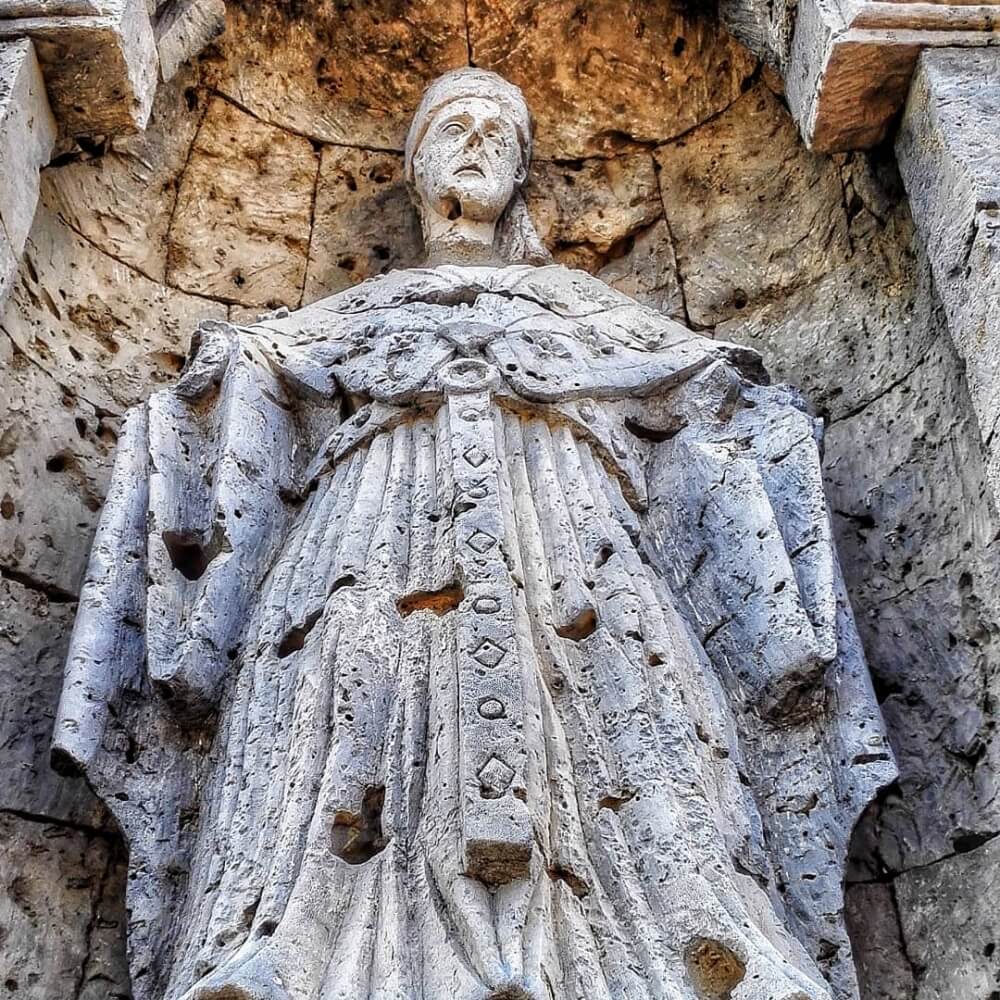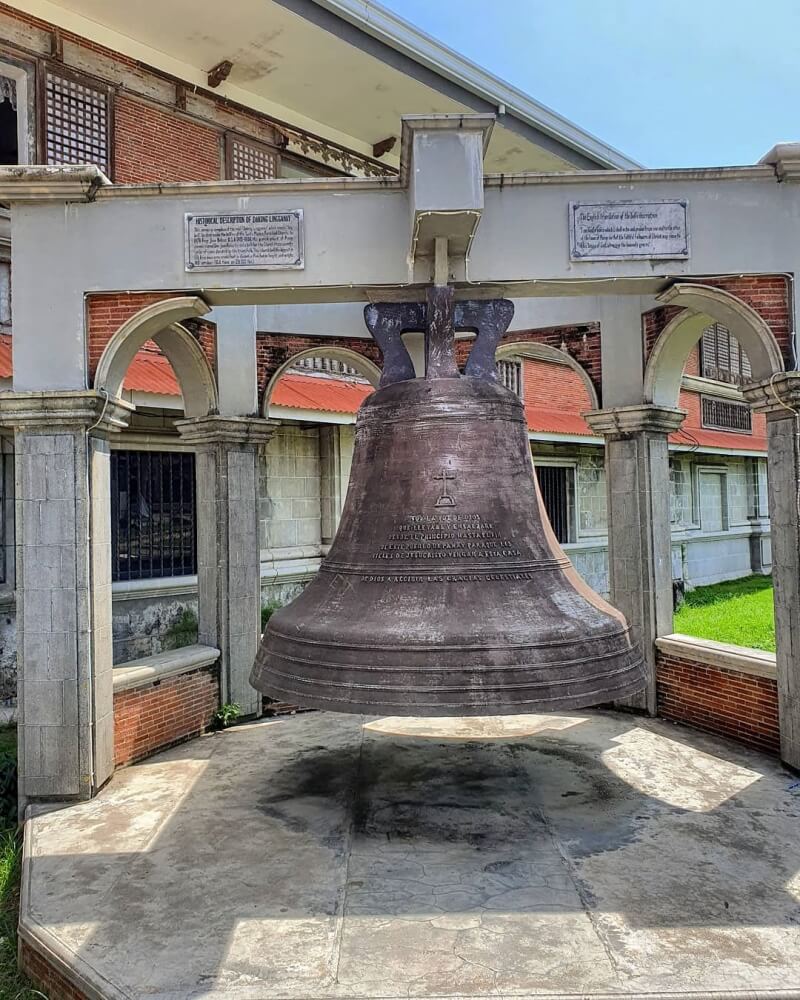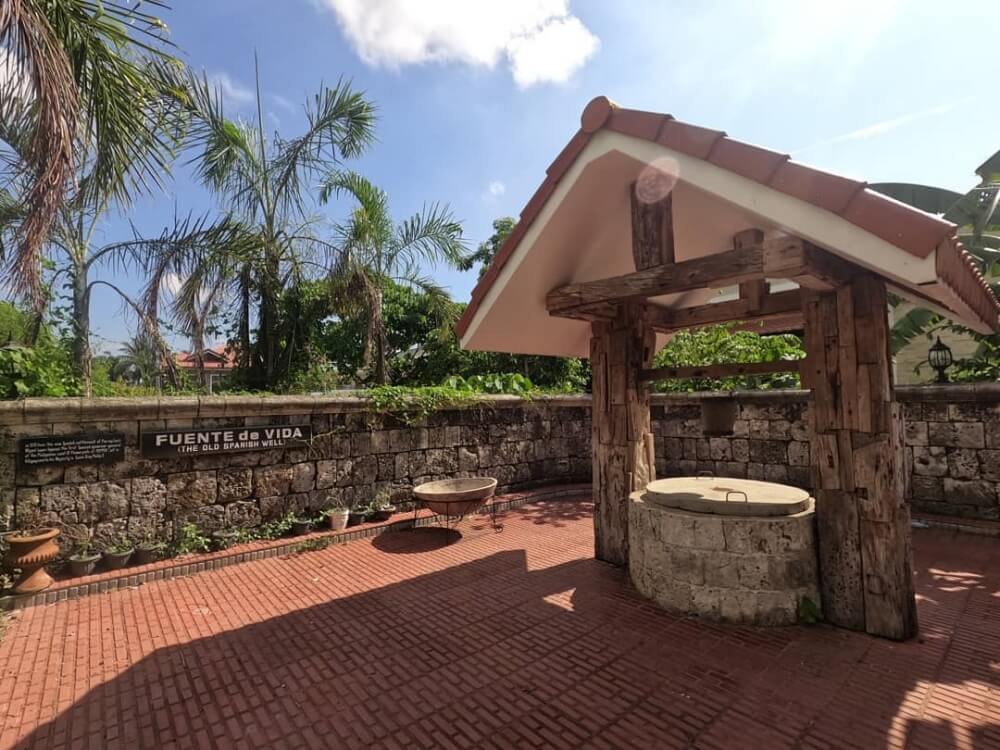Museo de Santa Monica, Roxas City, Capiz
"There is no place that is far from God."
- Message of Santa Monica to her son, St. Augustine.
In loving memory of Very Rev Msgr Benjamin F Advincula, PC, Episcopal Vicar for the Clergy, Archdiocese of Capiz, and parish priest, Santa Monica Parish.
Photographs taken by Dr Abe V Rotor
Living with Nature School on Blog [avrotor.blogspot.com]
The museum is housed in a renovated convent beside the old church.
Church of Sta Monica originally built in the 17th century
National Historical Marker. The old church itself is a museum.
Memorabilia
Centuries-old relics and icons
Gasera, oil lamps
Altar made of carved and molded silver plate
Mediogori Mother and Child icon
Blessed Sacrament
Relics and carved wooden table-chest
Original altar piece
St. Augustine

Author pays respect to the dead Christ; sacred garments,
map of the Province of Panay
Sta Monica, tabernacle, halo of gold and silver
German accordion; Microphone, WWII
Part 2
Dakung Ligganay: The Big Bell of Santa Monica, Capiz
Biggest bell in Southeast Asia, and third in the world.
Dedicated to the late Very Rev Msgr Benjamin F Advincula, PC, Episcopal Vicar for the Clergy of the Archdiocese of Capiz; and parish priest of Santa Monica Parish.
Dr Abe V Rotor
The big antique bell, measures 7 feet in height, 5 feet in diameter, and 10.4 tons in weight. It is surrounded by eight smaller bells that are sounded in coded pattern depending on the church occasion.
Author stands beside the replica of the biggest bell in Southeast Asia and third world's biggest. The original bell hangs atop the Sta Monica church belfry (lower photo). The faithful respond to its call with respect, to as far as eight kilometers away, like their ancestors did for generations. Roxas City, Capiz
Old Santa Monica church's interior garden


Details: engravings, scar of war, hanger, bell's interior and thickness
"Nothing is far from God." - Saint Monica
Feast Day - August 27th
Patron of Wives and Abuse Victims
Sta. Monica church was built in 1774, it is considered one of the oldest churches in the country and can be found in Panay, Capiz. Declared as a National Landmark by the National Historical Institute in 1997, its architecture is majestic Baroque.
The grand structure of the church is made of coral stone, shaped into Latin cross with one large central altar and four lateral ones. Each lateral altar, stunningly gilded with retablos of hardwood, supports artistically-made polychrome religious statues.
Atop the five-storey belfry of the church hangs the Dakung Ligganay (big bell), which is believed to be the biggest bell in Southeast Asia, and third in the world. The bell was cast using 70 sacks of coins by Don Juan Reina to honor God and the Virgin of Consolacion in 1878. (Mystical Capiz, by Ma Glaiza Lee)
For whom the bell tolls but for thee,when born to when you shall leave,and in between silence takes you freeinto what life is and what you believe,yet not being alone in this cruel world,but finding it sane in Heaven's bid.
Acknowledgment: Very Rev Msgr Benjamin F Advincula, PC Episcopal Vicar for the Clergy, Archdiocese of Capiz; Santa Monica Parish; and Museo de Santa Monica curator and staff.
ANNEX
Carlponcegarcia / CC BY-SA 3.0
5 Facts About Roxas City’s Iconic Santa Monica
Parish Church
By Kerry-Ann Augustin 02 Jun 2023
Acknowledgement with gratitude to publisher and author
of this article, photo sources as indicated, Internet.
Roxas City, the capital of the Philippines’ Capiz province, is nestled in the north of Panay Island, the sixth-largest island in the country.

Panay’s bountiful land and abundant resources led Miguel Lopez de Legazpi, leader of the Spanish expedition to the Philippines, to establish the second settlement there in 1568, following Cebu in the heart of the Visayas three years earlier.
It comes as no surprise then that Roxas City is home to a slew of Spanish colonial era buildings, the most iconic of which is the Santa Monica Parish Church.
Declared a National Historical Landmark in 1997, this religious structure - known to many as Panay Church - offers visitors an insight into the heritage, craftsmanship and architecture of a bygone era.
It is one of the oldest churches in Panay.
It is one of the oldest churches in Panay.
 The church is one of the best-preserved from Spanish colonial times. Image: Instagram @alan.gensoli
The church is one of the best-preserved from Spanish colonial times. Image: Instagram @alan.gensoliWhile the Santa Monica parish was founded in 1572, the church was believed to have only been completed later, in the 1600s.
After a typhoon wiped out the building in 1698, it took almost eight decades before a new church was constructed by Augustinian priest Father Miguel Murguia in 1774.
Then in 1875, another powerful typhoon that swept through the province left the structure Murguia built in shambles.
The current 1,750-square metre building, standing 18 metres tall, was erected on the same site in 1884 and is considered one of the grandest and most robust of Spanish colonial era churches.

It is a great showcase of coral masonry.
Sculptures of saints in the church’s coral stone wall niches. Image: Instagram @kirinaurdujaThe church’s pocked-marked walls and pillars are made of coral limestone mined from the sea.
Construction with coral stones took years to complete, as the material had to be hewn into blocks before being layered atop each other with argamasa, an emulsifying agent that combined egg whites, sand and lime renders.
The statues of Saint Agustin, Saint Monica and Saint Thomas that adorn the facade were also sculptured into the wall niches of the church.
It is home to Asia’s largest church bell.
A replica of the bell on the church grounds. Image: Instagram @titodaveballesteros Dakong Lingganay or The Big Bell, crafted in the mid-1800s, is housed in the church’s five-storey belfry.
The 1.5-metre tall bell, with a diameter of 2.1 metres, weighs an astounding 10.4 tonnes and is the largest church bell in Asia. Juan Reina, a blacksmith in Panay, melted 70 sacks of coins collected from parishioners to cast this unusually large bell.
The 1.5-metre tall bell, with a diameter of 2.1 metres, weighs an astounding 10.4 tonnes and is the largest church bell in Asia. Juan Reina, a blacksmith in Panay, melted 70 sacks of coins collected from parishioners to cast this unusually large bell.
 The church houses a treasure trove of old religious antiques. Image: Instagram @timawang.gala
The church houses a treasure trove of old religious antiques. Image: Instagram @timawang.galaA beautiful structure on the church grounds, with coral stone and adobe walls and capiz windows, once housed the parish’s convent.
After years of neglect, the building was renovated and turned into Museo de Santa Monica, a small museum that houses relics from the church dating back to 1774.
Some antiques to look out for in the museum include statuettes of saints, old musical instruments and an ornately crafted wooden bas-relief from the original church, crafted by sculptor Joseph Bergano in the 18th century.
It has an old Spanish well. The restored Spanish well on the church grounds. Image: Instagram @buemiondoy The well built on the church grounds - called Fuente de Vida or Fountain of Life - was known to produce large volumes of water during the Spanish colonial period. This was among the natural resources on Panay that served Legazpi’s settlement well.
Today, you can see this restored coral stone well surrounded by a pepper garden, just as it was in its heyday.
------------------
* Lesson on former Paaralang Bayan sa Himpapawid (People's School-on-Air) with Ms Melly C Tenorio 738 DZRB AM Band, 8 to 9 evening class Monday to FridayAcknowledgment: Museo de Santa Monica curator and staff; Rev Msgr Vicente F Kilata, Rev Fr Vic Bendico, Fr Anthony Bautista, Fr Mark Granflor, Fr Nonoy Abalajon, Fr Noel Abalajon, Fr Robert Alba, Bro Ray Bofil et al. Thank you for your cordial and valuable assistance you extended during my visit in 2005, specially to the late Very Rev Msgr Benjamin F Advincula, PC, Episcopal Vicar for the Clergy, Archdiocese of Capiz, and parish priest, Santa Monica Parish, for inviting me as guest and resource speaker during the diocesan meet in 2005. It is indeed a great honor and privilege I'll always cherish.





























No comments:
Post a Comment